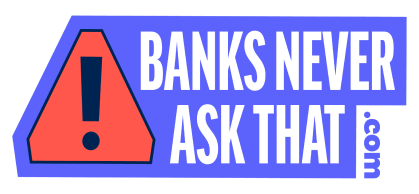
Don’t fall for fake. Take action to protect your hard-earned cash against phishing scams.
Don’t fall for fake. Take action to protect your hard-earned cash against phishing scams.

In 2023, scammers stole over $10 billion from regular people like you. Don’t become their next victim.
Get scam smart.
Watch for these five red flags of phishing in emails,
calls, and texts:
1. They ask you to open a link you weren't expecting.
2. They use urgent or fear-inducing language.
3. They send an attachment.
4. They request personal info like PINs, passwords, or social security numbers.
5. They pressure you to log into, or send money with, payment apps.
Now, let’s see how these red flags show up in real life phishing scams.
VIDEOS
Watch these videos to stay scam safe.

Don’t let scammers ruin the plot.
Beat them to it: Know what banks never ask.

Don’t be a date who falls for the bait. Learn what banks never ask.

Want an even deeper look into scam safety?

DO YOU PRACTICE SAFE CHECKS?
Stay one step ahead of scammers. Discover how to protect your checks and avoid fraud at PracticeSafeChecks.com

